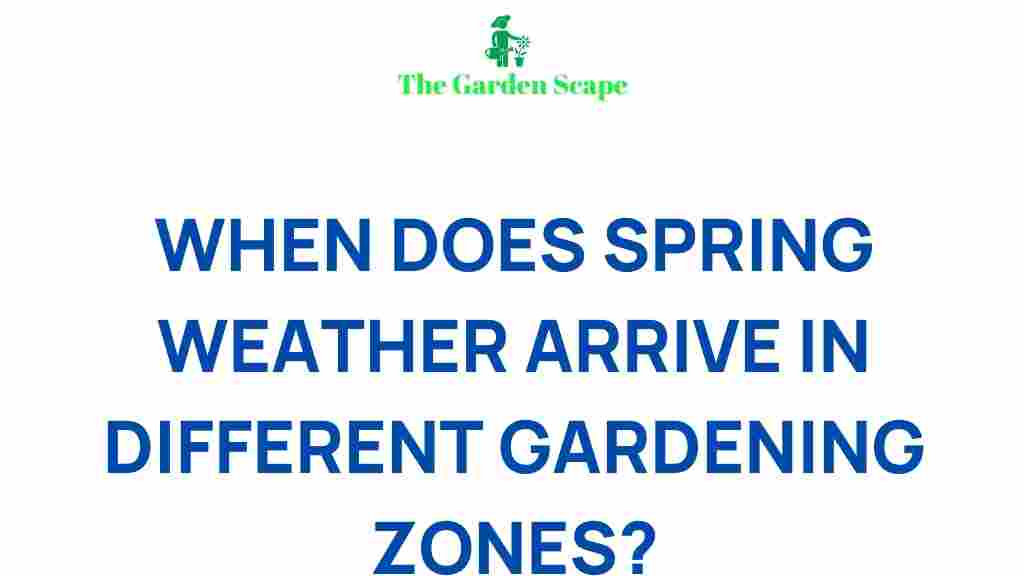Understanding Spring Weather Across Gardening Zones
The arrival of spring weather marks a time of renewal and growth, especially for gardening enthusiasts. However, this transition varies significantly across gardening zones. Understanding these differences is crucial to ensuring your plants thrive. In this article, we’ll explore how spring unfolds across various regions, provide tips for preparing your garden, and troubleshoot common challenges.
What Are Gardening Zones?
Gardening zones, also known as hardiness zones, are geographic regions defined by their climatic conditions, particularly minimum winter temperatures. The USDA Plant Hardiness Zone Map divides North America into 13 zones, each with specific temperature ranges. These zones guide gardeners in selecting plants suited to their local climate.
By understanding your zone, you can better anticipate the arrival of spring weather and plan your gardening activities accordingly. Not sure about your zone? Use our gardening zone guide to pinpoint your location.
How Spring Weather Varies Across Gardening Zones
Spring weather transitions differently across zones due to variations in temperature, frost dates, and precipitation. Here’s a breakdown of what to expect in key zones:
- Zone 3 (Coldest): Spring arrives late, usually in late April or May. Expect lingering frost and slow soil warming.
- Zone 6 (Moderate): Early signs of spring appear in late March or early April, with consistent temperatures above freezing.
- Zone 9 (Warmest): Spring comes early, often by February, offering ample time for planting before summer heat.
These differences highlight the importance of tailoring your gardening activities to your zone.
Preparing Your Garden for Spring Weather
To make the most of spring weather, preparation is key. Follow these steps to ready your garden:
1. Clean Up and Assess
Start by removing debris, dead plants, and weeds from your garden beds. Check for signs of pests or disease, and prune damaged branches. This cleanup creates space for new growth and ensures healthy plants.
2. Test and Amend Your Soil
As soil thaws, test its pH and nutrient levels. Based on the results, add compost, fertilizers, or other amendments to enrich the soil. Loosen compacted areas to improve aeration and water drainage.
3. Plan and Plant
Choose plants suited to your zone and spring timeline. Start seeds indoors if your zone has a late spring, or plant hardy vegetables like peas and spinach directly in the ground. For inspiration, check out this list of the best spring plants.
4. Mulch and Water Wisely
Apply mulch to retain soil moisture and regulate temperature. Water early in the day to reduce evaporation and prevent fungal issues. Inconsistent spring weather can make watering tricky, so adjust based on rainfall.
Troubleshooting Common Challenges with Spring Weather
Spring gardening isn’t without its hurdles. Here are solutions to common issues:
Frost and Temperature Fluctuations
Late frosts can damage tender plants. Use frost covers or cloches to protect seedlings during cold snaps. Monitor weather forecasts closely and delay planting if temperatures remain erratic.
Excessive Rain or Drought
Spring weather often brings unpredictable precipitation. Overwatering from heavy rain can lead to root rot, so ensure your garden has proper drainage. Conversely, use soaker hoses during dry spells to maintain consistent moisture.
Pests and Weeds
Spring awakens pests and weeds along with plants. Introduce beneficial insects, such as ladybugs, to control pests. Mulching and timely weeding can help manage invasive plants before they overrun your garden.
Conclusion
Understanding the nuances of spring weather across gardening zones is essential for a successful growing season. By preparing your garden, addressing challenges, and staying informed about your zone, you can enjoy a lush and productive garden all spring long. For more tips on seasonal gardening, explore our comprehensive guides.
Happy gardening!
This article is in the category Guides & Tutorials and created by TheGardenScape Team
